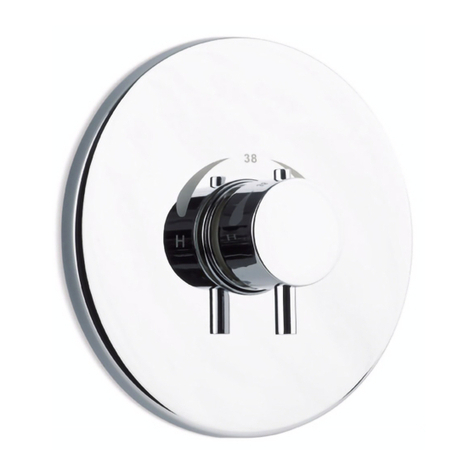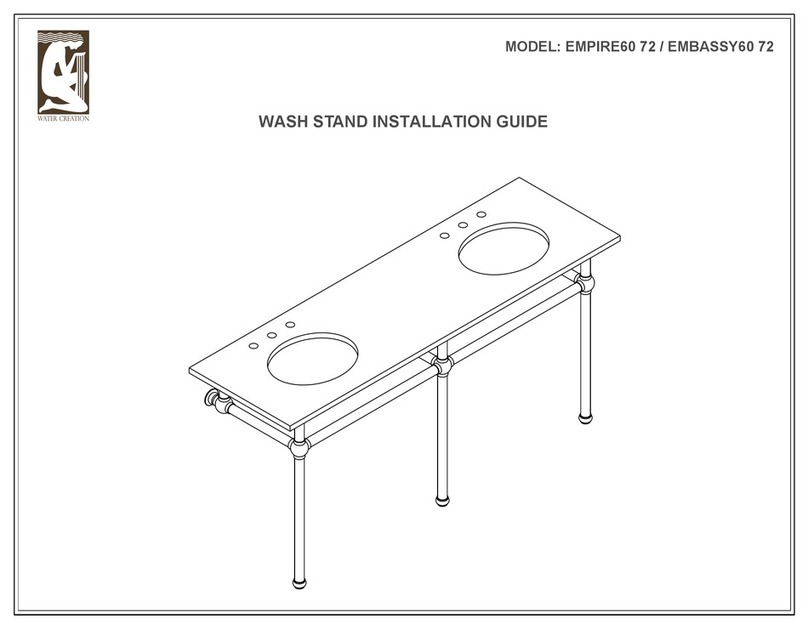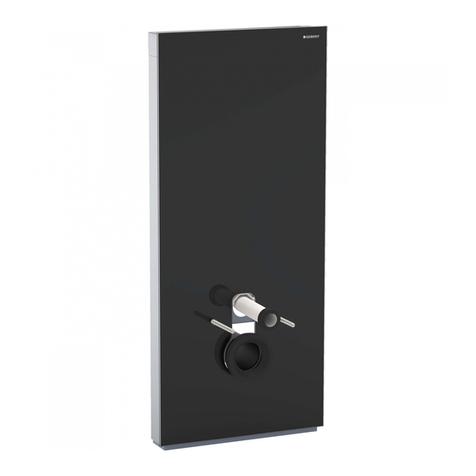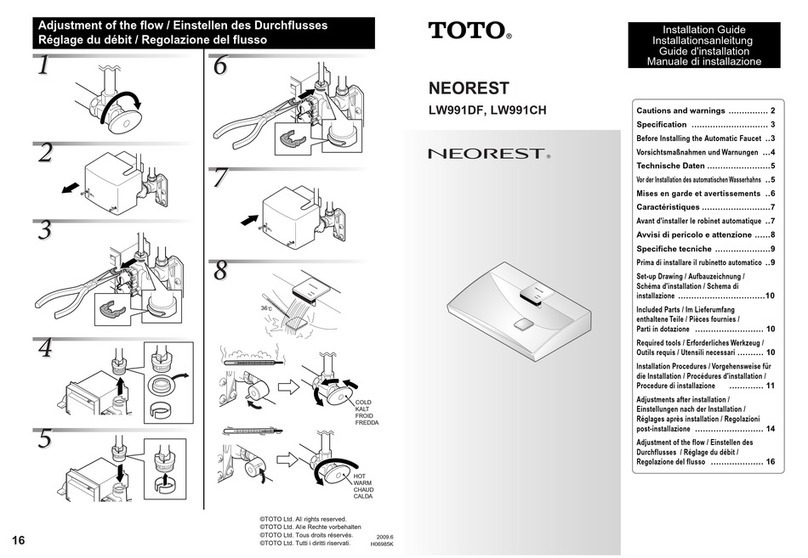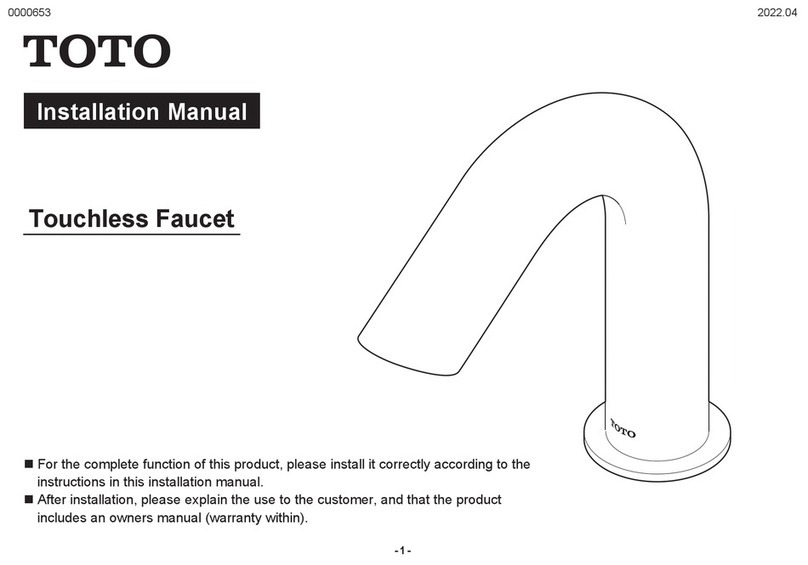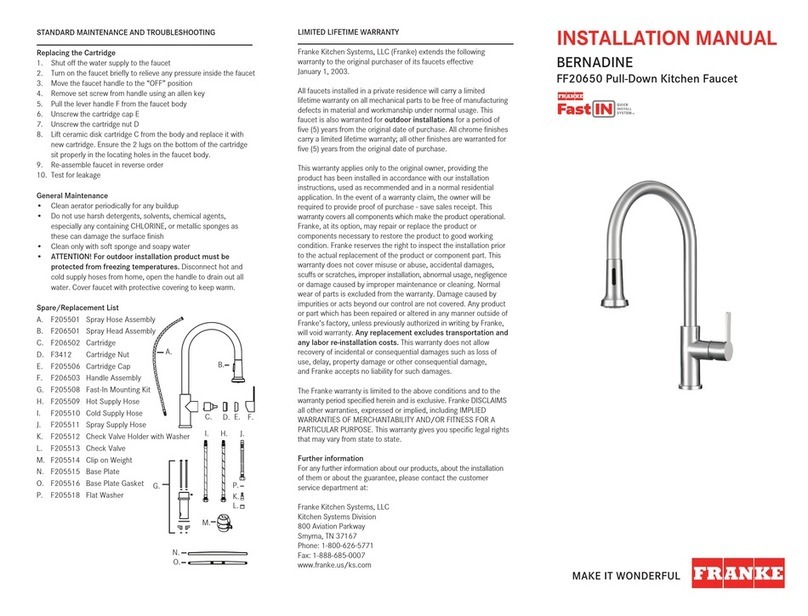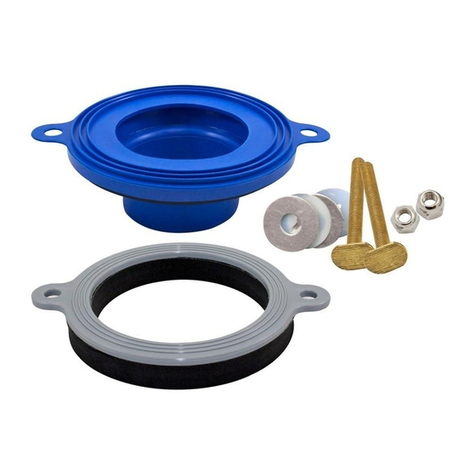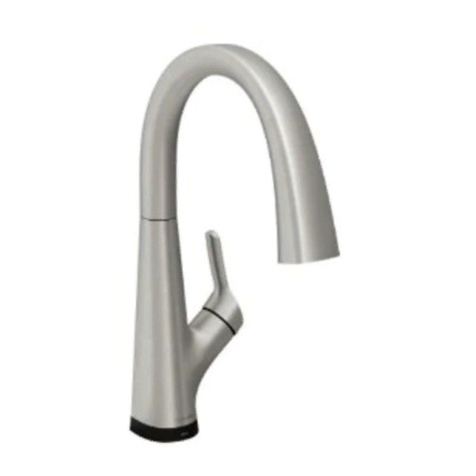Neptune Bath User manual

NEPTUNE OWNER’S MANUAL
Do not discard. Save these instructions for further use
Bath Whirlpool Mass-air Activ-air
Installation Operation Maintenance Repair

TABLE OF CONTENTS
INTRODUCTION
Important safety instructions . . . . . . . . . . . . . . . . . . . . . . . . . . . . . . . . . . . Page 3
Summary of precautions . . . . . . . . . . . . . . . . . . . . . . . . . . . . . . . . . . . . . . . Page 3
INSTALLATION
Before you begin . . . . . . . . . . . . . . . . . . . . . . . . . . . . . . . . . . . . . . . . . . . . . Page 3
Tools required . . . . . . . . . . . . . . . . . . . . . . . . . . . . . . . . . . . . . . . . . . . . . . . Page 3
Materials required . . . . . . . . . . . . . . . . . . . . . . . . . . . . . . . . . . . . . . . . . . . . Page 3
Site preparation . . . . . . . . . . . . . . . . . . . . . . . . . . . . . . . . . . . . . . . . . . . . . . Page 4
Recessed Installation . . . . . . . . . . . . . . . . . . . . . . . . . . . . . . . . . . . . . . . . . . Page 4
Tiling Flange (recessed installation of a podium style bath) . . . . . . . . . . . Page 5
Podium Installation . . . . . . . . . . . . . . . . . . . . . . . . . . . . . . . . . . . . . . . . . . . Page 6
Plumbing Installation . . . . . . . . . . . . . . . . . . . . . . . . . . . . . . . . . . . . . . . . . . Page 7
System hook-up (electrical installation) . . . . . . . . . . . . . . . . . . . . . . . . . . . Page 7
Finishing walls, decks and podiums . . . . . . . . . . . . . . . . . . . . . . . . . . . . . . Page 9
Optional Bath Skirt installation . . . . . . . . . . . . . . . . . . . . . . . . . . . . . . . . . . Page 9
Fixed height skirts . . . . . . . . . . . . . . . . . . . . . . . . . . . . . . . . . . . . . . . . . . . Page 10
Ajustable height skirts . . . . . . . . . . . . . . . . . . . . . . . . . . . . . . . . . . . . . . . . Page 10
OPERATING INSTRUCTIONS
On/Off control . . . . . . . . . . . . . . . . . . . . . . . . . . . . . . . . . . . . . . . . . . . . . . Page 11
Variable speed control . . . . . . . . . . . . . . . . . . . . . . . . . . . . . . . . . . . . . . . Page 11
Whirlpool multi-cycle control (optional) . . . . . . . . . . . . . . . . . . . . . . . . . Page 11
Mass-air & Activ-air control . . . . . . . . . . . . . . . . . . . . . . . . . . . . . . . . . . . . Page 11
Combo control . . . . . . . . . . . . . . . . . . . . . . . . . . . . . . . . . . . . . . . . . . . . . Page 12
Whirlpool: Ajustable jets . . . . . . . . . . . . . . . . . . . . . . . . . . . . . . . . . . . . . . Page 12
Whirlpool: Air induction . . . . . . . . . . . . . . . . . . . . . . . . . . . . . . . . . . . . . . . Page 12
Back-jets: Diverter valve (option) . . . . . . . . . . . . . . . . . . . . . . . . . . . . . . . Page 12
MAINTENANCE
Routine cleaning . . . . . . . . . . . . . . . . . . . . . . . . . . . . . . . . . . . . . . . . . . . . Page 13
Mass-air and Activ-air systems . . . . . . . . . . . . . . . . . . . . . . . . . . . . . . . . . Page 13
Whirlpool maintenance . . . . . . . . . . . . . . . . . . . . . . . . . . . . . . . . . . . . . . . Page 13
Stains . . . . . . . . . . . . . . . . . . . . . . . . . . . . . . . . . . . . . . . . . . . . . . . . . . . . . Page 13
Light bulb replacement . . . . . . . . . . . . . . . . . . . . . . . . . . . . . . . . . . . . . . . Page 13
REPAIRS
Minor scratch repair . . . . . . . . . . . . . . . . . . . . . . . . . . . . . . . . . . . . . . . . . Page 13
Major damage repair . . . . . . . . . . . . . . . . . . . . . . . . . . . . . . . . . . . . . . . . . Page 13
TROUBLESHOOTING . . . . . . . . . . . . . . . . . . . . . . . . . . . . . . . . . . . . . . . . . Page 14
HYDRO-MASSAGE
Introduction . . . . . . . . . . . . . . . . . . . . . . . . . . . . . . . . . . . . . . . . . . . . . . . . Page 15
Modern Hydro-massage . . . . . . . . . . . . . . . . . . . . . . . . . . . . . . . . . . . . . . Page 15
Massage . . . . . . . . . . . . . . . . . . . . . . . . . . . . . . . . . . . . . . . . . . . . . . . . . . . Page 15
Temperature . . . . . . . . . . . . . . . . . . . . . . . . . . . . . . . . . . . . . . . . . . . . . . . . Page 15
Aromatherapy . . . . . . . . . . . . . . . . . . . . . . . . . . . . . . . . . . . . . . . . . . . . . . Page 16
Nutrient transfer . . . . . . . . . . . . . . . . . . . . . . . . . . . . . . . . . . . . . . . . . . . . Page 16
Chromatherapy . . . . . . . . . . . . . . . . . . . . . . . . . . . . . . . . . . . . . . . . . . . . . Page 16
Conclusion . . . . . . . . . . . . . . . . . . . . . . . . . . . . . . . . . . . . . . . . . . . . . . . . . Page 16
IMPORTANT INFORMATION TO SAFEGAURD . . . . . . . . . . . . . . . . . . Page 16
TABLE OF CONTENTS
NEPTUNE ...
The art in baths!
NEPTUNE OWNER’S MANUAL
Welcome to the Neptune universe.
Your new Neptune bath is a top of the
line product that will give you years of
pleasure and relaxation if it is installed
and maintained correctly.
We encourage you to read and under-
stand all of the safety, installation and
maintenance instructions included in
this owner’s manual. It is strongly
recommended that the installation of
your bath be carried out by competent,
qualified and accredited professionals
in accordance with governmental
building codes and by-laws.

INSTALLATION
BEFORE YOU BEGIN
Before you begin the installation of your new Neptune bath it is
strongly suggested that you do the following:
•Inspect your bath visually to make sure that it has not been
damaged during transportation. If you suspect that there may
be damage do not install the bath.
• Make sure that the bath is the unit that you ordered and that its
dimensions and drain-side correspond to your plans.
•Never use the pump, piping or jets to lift or manipulate your
bath, as this can damage both the equipment and the watertight
connections into the bath.
• The bath should be placed in the bathroom and the floor should
be checked for level. Make sure that the floor is solid enough to
support the weight of the bath when it is full (1000 lbs aver-
age). The feet of the bath must be in contact with the floor.
It cannot be suspended by the perimeter alone.
• For optional non-adjustable skirt installation, the bath must be
installed at the correct height to facilitate installation of the skirt
(see table 1 for height information)
•An access panel is mandatory. Most building codes require
that there be an access panel a minimum of 30 cm x 55 cm
(12” x 22”) in order to service the plumbing, motor, control unit
and keypad.
• In order to protect the bath during installation a piece of
cardboard should be cut out of the box and placed in the
bottom of the bath.
•
If there is a protective plastic sheet covering the surface of your bath,
it should not be removed until the installation is complete. When
necessary during the installation process the plastic can be peeled
back for installation of the drain, overflow and surface mounted
plumbing fixtures. The plastic should also be peeled back in areas
where it could become snagged during the installation process.
• If your bath is equipped with a Whirlpool, Mass-air or Activ-air
system you must test it before final installation. These systems
are tested at the factory but can be loosened by transportation
and installation.
• Remember that the Whirlpool, Mass-air and Activ-air systems
must be hooked-up before the final installation.
• If your bath is equipped with adjustable metal feet they should
be installed now by threading them into the metal support rails
underneath the bath.
TOOLS REQUIRED
• Level
• Hole-saw (for surface mount faucet installation)
• Sabre saw for podium installation
• Safety glasses
• Tape measure
• Caulking gun
MATERIALS REQUIRED
• Bathroom grade (mildew resistant) silicone caulking
•Construction Adhesive
•Adjustment shims (except for baths equipped with adjustable feet)
• 1” X 2” Wood strip for attachment to the walls
•2” X 3” Wood stock for building podium or apron
• 5/8” Exterior grade plywood for covering podium or apron
• No. 8 x 11/4” wood screws
•Bath drain and overflow kit (available from your Neptune dealer)
• Mortar (optional mortar bed installation only)
IMPORTANT SAFETY INSTRUCTIONS
WARNING: When using this unit and any electrical product basic
precautions should always be followed, including the following:
DANGER: Risk of electric shock. This unit must be connected only to
a circuit that is protected by a class-A ground fault circuit interrupter
(GFCI). Grounding is required, this unit should be installed by a
qualified service representative and grounded. Install to permit access
for servicing.
WARNING: Risk of electric shock. A licensed electrician should make
all electrical connections.
WARNING: Risk of electric shock.
Disconnect power before servicing.
WARNING: Risk of injury or property damage. Please read and
understand all instructions thoroughly before beginning installation,
including the following requirements.
•Follow all local plumbing and electrical codes.
•Provide unrestricted access to the pump. Access must be provided
for servicing the pump and controls. The access must be located
immediately next to the pump.
WARNING: Unauthorized modification may cause unsafe operation
and poor performance of the Whirlpool, Mass-air and Activ-air
systems. Neptune shall not be liable under its warranty or otherwise for
personal injury or damage caused by any such unauthorized modification.
WARNING: Risk of child drowning. To reduce the risk of accidental
drowning, do not permit children to use the bath unless they are
closely supervised.
SUMMARY OF PRECAUTIONS
The following precautions should always be taken:
•The suction cover must be in place at all times to minimize the potential
for hair and body entrapment.
• Keep body and hair a minimum of 15cm (6”) away from the suction
fitting at all times when the whirlpool system is operating. Hair longer
than shoulder length should be secured close to the head.
• Never operate electrical appliances (telephone, television, radio, hairdryer
etc.) inside or within 1.5m (5 ft) of the bath.
• Never leave small children unattended in the bath.
• Do not operate the whirlpool system unless the bath is filled with water
to at least 5cm (2”) above the highest jet.
• When cleaning your bath, do not use abrasive substances that will
damage the baths’ surface.
• A maximum water temperature of 104o F (40o C) is recommended.
Bathing temperatures above 104o F (40o C) for prolonged periods can
be injurious to health. Pregnant or possibly pregnant women should
consult a physician before using a Whirlpool system.
• The Whirlpool system must be cleaned at least monthly.
3
INSTALLATION

4
SITE PREPARATION
• The site should be cleared of debris and vacuumed. This will
ensure that the bath is leveled properly and that no dirt can be
sucked into the bath’s systems preventing possible damage.
• The floor should be checked for level and solidness. The level
should be in a range that can be compensated for by the use of
adjustment shims. An average sized bath can weigh as much as
450 kg (1000 lbs) when full, the floor must be able to support
this weight.
• An opening of 15cm x 30cm (6” x 12”) needs to be cut into the
floor for the bath drain and overflow (see fig.1). Make sure that
there are no obstructions in this space.
• The plumbing rough-in for both the drain and the supply lines
should be completed by a competent and accredited plumber
before the bath is moved into its final position.
• For baths equipped with a Whirlpool, Mass-air, Activ-air, Lighting sys-
tem or inline water heater all electrical connections should be com-
pleted by a competent and accredited electrician. Each system
must be hooked-up to a dedicated 15 amp ground fault circuit
interrupter (GFCI) breaker, or where allowed by law to a regular
breaker with a ground fault circuit interrupter (GFCI) outlet.
RECESSED INSTALLATION
When the plans call for installation of the bath in a recess (i.e.
encased between 2 or 3 walls) we suggest that the following
installation procedure be followed:
•Step 1: The bath overflow and drain should now be installed by
a competent certified plumber according to the overflow manu-
facturers instructions, and conforming to local building codes.
•Step 2: The bath should be set in position and leveled using
adjustment shims under all of the bath’s feet. Some baths are
equipped with adjustable metal feet and can be adjusted by
rotating each foot to the desired height. The bath should be
leveled longitudinally first, by placing a long level along the bath
deck closest to the wall (see fig. 2). It can then be leveled from
front to back by adjusting the shims under the front feet. When
installing the optional bath skirt for Helena and Daphne
baths, the bath must be installed at the specific heights
shown in table 1.
Table 1
•Step 3: Using a pencil mark the wall studs directly under the
lip of the deck (see fig. 2). If you intend to set the bath in a
mortar bed the position of the feet should be marked too.
•Step 4: Remove the bath so that you have access to the walls.
•Step 5: Cut supports for the bath deck from 1”x 2” stock.
The supports should be long enough to support the entire
length of the bath. These supports are fastened to the wall
studs with the top of the support at the level of the marks from
step 2 (see fig. 3).
•Step 6:Mortar bed (optional, recommended for tub/shower
installations and baths with an integral skirt.) NOTICE: When
using mortar to support a bath equipped with a Mass-air
system, the mortar should be under the feet only. Under no
circumstances should the mortar come into contact with
the piping and fittings underneath the bath. Freshly mixed
mortar should now be placed on the floor where the bath’s feet
will land (marked out in step 2) (see fig. 4).
•Step 7: Apply a generous bead of construction adhesive along
the top of the 1”X2” support strips (see fig. 5). This will prevent
the bath from shifting and also compensates for the uneven-
ness of the fiberglass reinforcement under the deck.
•Step 8: Set the bath into position. Check that the bottom of
the deck comes into contact with the support strips. If you
opted to use a mortar bed, check that the mortar has
squeezed out and that the feet are supported. Add more
mortar if necessary. If you did not use a mortar bed, the shims
should be replaced under the feet, and glued in place with con-
struction adhesive.
Plywood Floor
Drain
centre
15cm
6"
30cm
12"
Fig. 1
Shims
Mark studs
Pencil
mark
1" x 2" support
INSTALLATION HEIGHT FOR SKIRT, under bath
BATH TYPE lip to the top of the finished floor (ceramic tile)
Helena 46 cm (18”)
Daphne 46 cm (18”)
M
o
r
t
a
r
Pencil outline of feet
Fig. 2
Fig. 3
Fig. 4

5
•Step 9: If your bath is not equipped with an integral skirt the
front wall should now be built. It is made from 2”x 3”s spaced
41cm (16”) on center (see fig. 6). Remember to leave
enough space between the top of the wall and the bottom
of the bath deck to allow for installation of the plywood and
the ceramic tile or other covering material.
TILING FLANGE
Although many Neptune baths are designed with an integral tiling
flange occasionally the bathroom plans will call for the installation of
a podium style bath between either two or three walls. In such
instances it is highly recommended that an aluminum tiling-flange
(1/2”x 1/2” angle 1/16th thick) be installed. This is available as an
installed option from your Neptune dealer or you can add your own.
•Step 1: Using a miter box and hacksaw cut the tiling flange to
the lengths required. At the corners where the flanges meet the
cuts should be made at 450angles (see fig. 7).
•Step 2: Where the tiling flange comes into contact with the bath,
the surfaces of both the flange and the bath should be cleaned
with denatured alcohol.
•Step 3: Apply a thin bead of bathroom grade (mildew resistant)
silicone along the perimeter of the bath where the tiling flange
is to be installed. Care should be taken not to use too much as
it could squeeze out onto the deck of the bath when the tiling
flange is positioned (see fig. 8).
•Step 4: Beginning with the center strip (for three sided applica-
tions) set the tiling flange into the silicone. By depressing the
front of the flange first you will ensure that the excess silicone
squeezes out towards the rear and not onto the deck of the bath
(see fig. 9). Repeat this procedure for the remaining pieces.
•Step 5: The mitered joints should be held closed by applying a
short length of masking tape to the outside of the joint (see fig.
10) The joint should then be sealed from the inside by applying
a small bead of silicone in each of the miters (see fig. 11).
45°
Silicone
Silicone
Press this edge first
Rotate
Squishes
outexcess
to rear
Tape
Adhesive
41cm max
16"max
* leave
enough
space
Tile
2" x 3" structure
Plywood
Fig. 7
Fig. 8
Fig. 9
Fig. 10
Silicone
Fig. 11
Fig. 5
Fig. 6
(optional, for recessed installation
of a podium style bath)

6
PODIUM INSTALLATION
When the plans call for podium installation we recommand the
following installation procedure:
NOTICE: To minimize the risk of errors you should not begin
construction of the podium until you have the bath on hand.
NOTICE: The bath must be supported by both its feet and at
the rim. The feet must be in contact with the floor at all times.
•Step 1: Calculate the height of your podium structure. Remember
that the finish material must fit between the lip of the bath and the
podium structure, so its thickness must be subtracted from the
total height when building your structure (see fig. 12).
•Step 2: Frame the podium using 2”x 3”s spaced no more than
41cm (16”) on center. Remember to provide adequate support
under the rim of the tub and ensure that the framework is level. This
framing must conform to your local building codes (see fig. 13).
•Step 3: Cut out an opening15cm x 30cm (6”x 12”) in the floor
to accommodate the bath drain and overflow piping.
•Step 4: Sheath the top of the podium using 5/8” thick exterior
grade plywood. The plywood should be attached to the frame-
work using screws.
•Step 5: Lift the bath onto the podium and align it in the desired
position. The outline can now be traced using a level and pen-
cil as shown in fig. 14.
•Step 6: Remove the bath from the podium, and sketch a cut
line 2.5cm (1”) inside the outline of the bath (See fig. 15). You
can use a 1” scrap of wood to simplify this procedure.
•Step 7: Drill a pilot hole on the cut line. Cut out the waste
following the cut line using a saber saw (see fig. 16).
•Step 8: Clear away and vacuum any remaining debris from
inside the podium (debris could be sucked into the bath’s
systems causing damage not covered by the warranty).
•Step 9: The bath overflow and drain should now be installed by
a competent certified plumber according to the overflow manu-
facturers instructions, and conforming to local building codes.
•Step 10:
Lift the bath and set it into the podium. Make sure that it
does not catch on the plywood deck and that there is sufficient
space for the bath overflow plumbing. Make any necessary modifi-
cations before proceeding with the next step. If you plan to use a
mortar bed mark the position of the bath’s feet on the floor and
remove the bath from the podium.
•Step 11:
Mortar bed (optional, otherwise go to step 13)
NOTICE: When using mortar to support a bath equipped
with a Mass-air system, the mortar should be under the feet
only. Under no circumstances should the mortar come into
contact with the piping and fittings underneath the bath.
Freshly mixed mortar should now be placed on the floor where
the bath’s feet will land (marked out in step 10) (see fig. 4).
30cm
12"
15cm
6"
Cut out for drain /
overflow Provide support
under the rim
2" x 3" 's
41cm
16"max
Plywood deck
TRACING THE OUTLINE OF THE BATH
Trace outline with pencil
1" Scrap of wood
Bath outline
Sketching the
cut-line
M
o
r
t
a
r
Pencil outline of feet
Fig. 13
Fig. 14
Fig. 15
Fig. 16
Fig. 4
Remember to
leave sufficient
space for tiles,
mortar or other
finish material.
Feet must be in contact with the floor.
Fig. 12

•Step 12: (Mortar option only) Lift the bath and set it into the podi-
um. Level the bath longitudinally first, then across its width. Check,
underneath the bath, that the mortar has squeezed and that there is
adequate mortar for support under the feet. Add some if necessary.
•Step 13: (non-mortar potion only) Level the bath longitudi-
nally first, then across its width by adding adjustment shims
under the feet. Glue the shims to the feet and the floor using
construction adhesive.
PLUMBING INSTALLATION
•Step 1: (Bath mounted faucets) Roman tub style faucets can be
mounted either onto the podium, or they can be attached
directly to the bath. When attachment to the bath is called for,
great care must be taken when drilling through the acrylic.
√Always use a sharp hole-saw with a pilot bit that extends at
least 1/4” below it.
√The hole saw must always be larger than the fitting, forcing an
object through a hole that is too small will damage the acrylic.
√Drill slowly and steadily letting the tool do the work. This will
help to reduce heat build-up and binding at the acrylic surface.
√When installing the fixtures never over-tighten them as this can
cause damage to the acrylic surface.
•Step 2:
Now that the plumbing installation is complete, your new
bath needs to be leak tested. We recommend a 20 minute soak test,
the bath should be filled above the level of the overflow and left to
stand for 20 minutes. If no leaking is detected at the bath or the
plumbing hook-ups during or after 20 minutes you may continue
with the installation.
SYSTEM HOOK-UP
All electrical connections should be done by a competent licensed
electrician and conform to the local building codes in your area.
Each of your bath’s systems should be connected to an independ-
ent 15amp class-A ground fault circuit interrupter (GFCI) breaker.
Where allowed by law hey can be connected to GFCI outlets con-
nected to a regular breaker.
The bath systems and controls are designed to operate on
110/120 Volts AC. (North America), 60hz or 220/240 Volts AC,
50hz (Europe) only.
•Step 1: Turn off the power to the bath circuit at the electrical panel.
•Step 2: Hook up the factory installed 14/3 JJ wiring from the
control module and/or blower and/or pump and/or inline
heater and/or light to the circuit panel using 14/2 NMD cable
(see fig. 17). If the distance from the electrical panel to the bath
is further than 30m (100ft), refer to your local building code to
make sure that a sufficient gauge cable is used.
•Step 3: Electronic touch pad or switch: The hole for the elec-
tronic touch pad or switch is drilled at the factory. The pad or
switch has a self-sealing gasket that will hold it in place.
Depending on your model it will plug directly into the motor or
control module (see fig.17).
•Step 4: Optional Bath light: The optional bath light is operated
using an air switch. The switch can be mounted on the podium
or directly on the deck of the bath. For mounting directly on the
bath follow the same procedure as Plumbing installation
step 1 “bath mounted faucets.” The air tube is attached to the
barbed fittings on the both the bottom of the switch and on the
light control module which houses the transformer. The housing
for the light is factory installed on the bath (see fig.18). Please
see “maintenance” pg.13 for light bulb replacement instructions.
•Step 5: Optional in-line water heater: The in-line water heater
has a built-in pressure switch that automatically turns the unit
on when the whirlpool pump is operating. There is a red light
at the top of the unit, which will be illuminated when the unit
is in operation. No further connections other than those in
step 2 are necessary.
•Step 6: System test: Now that the electrical installation is com-
plete, the power can be turned on at the electrical panel. The
bath should be filled above the level of the jets and the system
run for twenty minutes (see operating instructions pg.11). If no
leaks are detected and all of the systems are functioning normally
you may proceed with the remainder of the installation.
(electrical installation)
7

12OV 60HZ
15A GFCI
12OV 60HZ
15A GFCI
GFCI
ELECTRICAL
FEED
Blower
MASS-AIR AND ACTIV-AIR
Junction box
Black
White
Green/Copper
CANADA / EUROPE
USA ONLY GFCI
Junction box
Black
White
Green/Copper
CANADA / EUROPE
GFCI
ELECTRICAL
FEED
Pump
WHIRPOOL
USA ONLY GFCI
Sealed control unit
No adjustments
possible
GFCI
GFCI
ELECTRICAL
FEED
COMBINED AND TURBO AIR
12OV 60HZ
Double 15A
GFCI class A
Blower
For 230V 50HZ (EUROPE)
use double 10A GFCI class A
Pump
Junction box
Black
White
Green/Copper
CANADA / EUROPE
Green/Copper
Sealed control unit
No adjustments
possible
USA ONLY GFCI
8
Fig. 17

9
FINISHING WALLS, DECKS AND PODIUMS
Now that you have installed and tested your bath and its
systems, the following pointers will help you achieve a profes-
sional looking and watertight finish:
√Fig. 19, shows how the finishing materials should be installed
relative to the tiling flange.
√The tiling flange does not replace caulking. Always caulk your
bath using good quality, bathroom grade (mildew resistant)
silicone caulk.
√Fig. 20, shows how the finishing materials should be installed
relative to the bath lip on a podium or deck installation.
√All 900angles including those between the walls, the podium
and the deck should be sealed with silicone caulk (see fig 21).
OPTIONAL BATH SKIRT INSTALLATION
Optional bath skirts are available for many Neptune baths. There
are two general types, fixed height aprons such as those for
Helena and Daphne baths and adjustable height skirts such as
those for the Ariane, Orphee and Venus baths. All skirts are
designed shorter than the bath by a 1/2” on either side. This
is to allow for removal of the skirt after the walls have been
finished. Follow the instructions that match your type of skirt:
12OV 60HZ
15A GFCI
GFCI
ELECTRICAL
FEED
Permanent
junction box
Internal
pressure switch
INLINE HEATER
Black
White
Green/Copper
USA ONLY GFCI
CANADA / EUROPE
12OV 60HZ
15A GFCI
GFCI
ELECTRICAL
FEED
Permanent
junction box
LIGHT
Air tube
Push to fit
Bulb 12V
7W
Switch
Black
White
Green/Copper
Sealed control unit
No adjustments
possible
USA ONLY GFCI
CANADA / EUROPE
1" x 2" support
Construction adhesive
Tiling flange
Tile adhesive
Gyproc
Silicone
1/8" gap
Integrated flange Aluminium flange
Tile adhesive
Gyproc
Silicone
Silicone caulking
Ceramic tile
Plywood
deck
Silicone
Tile
Tile
Glue
Plywood
Plywood
Fig. 18
Fig. 19
Fig. 21
Fig. 20

10
FIXED HEIGHT SKIRTS
The bath must be installed at a specific height in order for the
skirt to fit properly refer to table 1 on page 4 to find the
correct height for your bath.
The skirt is comprised of 3 components, 2 blocks marked “left”
and “right” and the skirt itself (see fig. 22).
•Step 1: Install the two blocks marked “left” and “right”,
they must be flush with the lip of the bath and vertically level
(see fig.23).
•Step 2: Set the skirt in place by pushing it up and behind the
lip of the bath. If you installed the bath at the correct height it
will be a snug fit between the floor and the bottom of the bath
lip. Attach it to the two side blocks using screws through the
holes in the skirt (see fig. 24).
•Step 3: Install the caps on the screws.
ADJUSTABLE HEIGHT SKIRTS
The skirt is comprised of 4 components, the L shaped bracket
that screws to the floor, 2 blocks marked “left” and “right” and the
apron (see fig. 25).
•Step 1: Install the two blocks marked “left” and “right”, they must
be flush with the lip of the bath and vertically level (see fig.26).
•Step 2: Position the L-shaped base 22mm (7/8”) from the front of
the blocs as shown in fig. 27 and fasten it to the floor with screws.
•Step 3: (2 people are required for this operation) Lift
the skirt into place, flush under the lip of the bath. Attach it
to the two side blocks using screws through the holes in the
skirt (see fig. 28).
•Step 4: Make sure that the skirt is level at the center of the bath
and that it tucks behind the lip. Screw the apron to the base
through the hole in the center of the apron (see fig. 29).
•Step 5: Install the caps on the screws.
Flush
22mm
7/8"
22mm
7/8"
Flush
Flush
Centrered
Left
Right
Apron
Base L
Fig. 23
Fig. 24
Fig. 25
Fig. 26
Fig. 27
Fig. 28
Right
Left
Skirt
Fig. 22
Fig. 29

BOUTON ACTION
BLOWER DISPLAY
1st Touch Blower turns on at max. LED: ON
The 20 minute run timer activates itself.
2nd Touch Off LED: OFF
Touch and hold Blower speed increases. LED: ON, while button is depressed.
Release pressure at the desired speed.
Touch and hold Blower speed decreases. LED: ON, while button is pressed.
Release pressure at the desired speed.
1st Touch Wave cycle begins. LED: ON
2nd Touch Quick wave cycle begins. LED: FLASHES, 2 sec. ON, 2 sec. OFF.
3rd Touch Wave cycle off. LED: OFF
A 1-minute drying cycle will automatically be activated 20 minutes after the blower is stopped.
LED: FLASHES until drying cycle has executed.
ON/OFF CONTROL
ACTION PUMP DISPLAY
1st Touch Pump starts LED: ON
2nd Touch Pump stops LED: OFF
11
OPERATING INSTRUCTIONS
MASS-AIR & ACTIV-AIR CONTROL
OPERATING INSTRUCTIONS

12
BUTTON BLOWER / PUMP
Blower turns on
Blower turns off
Blower speed decreases. Release pressure
at the desired speed.
Blower speed increases. Release pressure
at the desired speed.
Whirlpool wave cycle begins.
Whirlpool fast wave cycle begins.
Pump starts
Pump stops
ACTION
1st Quick Touch
2nd Quick Touch
1st Touch and hold
2nd Touch and hold
1st Touch and hold,
until LED goes off.
2nd Touch and hold,
until LED goes off.
1st Touch
2nd Touch
DISPLAY
LED: ON
LED: OFF
LED: ON, while button is pressed.
LED: ON, while button is pressed.
LED: ON until pulsation cycle initiates.
ON again after button is released.
LED: ON until fast pulsation cycle initiates.
FLASHES after button is released.
LED: ON
LED: ON
LED: FLASHES until drying cycle has executed.
COMBO CONTROL
WHIRLPOOL: ADJUSTABLE JETS
Neptune whirlpool jets have two adjustable features, direction
and flow. Direction is adjusted by simply moving the nozzle to
point in the desired direction. Flow is adjusted by rotating the
nozzle (see fig. 30) or the face plate for the Maxima jet.
Turning the nozzle or face plate clockwise reduces flow and turn-
ing it counter-clockwise increases it.
WHIRLPOOL: AIR INDUCTION
Neptune’s whirlpool system increases the massaging effect
by drawing air into the jets. The amount of air that is drawn in is
controlled by the air induction valves (usually one per side, see
fig. 31). Turning the valve anti-clockwise opens it allowing more
air to be drawn into the system, turning it counterclockwise
reduces the effect. Air induction greatly increases the foaming
effect of bath foams so care should be taken not to use too much
when operating the whirlpool with the air valves open.
BACK-JETS: DIVERTER VALVE
Some Neptune baths that have the back-jet option are equipped
with an optional diverter valve. This valve (see fig. 32), redirects
flow from the main jets to the back-jets allowing you to balance
the massage to the point where you enjoy it the most.
Turbo
Maxima
Fig. 30
Diverter valve
Fig. 31
Air induction valve
Fig. 32
(option)
A 1-minute drying cycle will automatically be activated 20 minutes after the blower is stopped.

13
REPAIIRS MAINTENANCE
MAINTENANCE
ROUTINE CLEANING
In order to protect the acrylic surface of your Neptune bath
it should be cleaned only with a non-abrasive liquid bathroom
cleaner such as liquid spic and span or a detergent formulated
specifically for acrylic. NEVER USE ABRASIVE POWDER (VIM, AJAX
etc.), PETROLEUM DISTILLATES OR OTHER STRONG SOLVENTS
TO CLEAN THE SURFACE OF YOUR BATH.
MASS-AIR AND ACTIV-AIR SYSTEMS
If your Neptune bath is fitted with either a Mass-air or Activ-air
therapeutic system most of the routine maintenance is eliminated
by the fact that the electronic control module has a built-in auto-
matic drying cycle. This cycle, that initiates 20 minutes after the
blower has stopped, removes all remaining stagnant water from
the air jets, return valves and piping thus keeping them dry. If your
bath is often used without activating the system, it should be
momentarily activated so that the drying cycle will initiate.
WHIRLPOOL MAINTENANCE
Neptune recommends that the following cleaning procedure be
undertaken at least once per month.
1. Fill the bath with hot water 2 inches above the level of the jets.
2. Add 2-Cups of vinegar or 1/4 cup of dishwasher soap.
3. Run the whirlpool for approximately 5 minutes.
4. Let the bath soak for a 1/2 hour.
5. Run the whirlpool for another 5 minutes.
6. Drain the bath.
7. Rinse with cold water
STAINS
If you have a particularly resistant stain, you can use de-natured
alcohol to try and remove it (de-natured alcohol is toxic, so
always follow the safety instructions that come with it and wear
rubber gloves).
LIGHT BULB REPLACEMENT
The mood lighting kit contains 2 tools specially designed for
changing the light bulb.
•Step 1: The outer lens housing must be held in place with the
“C” shaped tool (see fig.33) to prevent damage to the water-
tight seal between the housing and the bath.
•Step 2: The inner lens can now be unfastened by rotating it
counter-clockwise using the lens key (see fig. 34).
•Step 3: Remove the light bulb by pulling it out of its socket and
insert a replacement bulb (12V No. 912).
•Step 4: Re-insert the inner lens making certain that the gasket
ring is in place and that the lens housing does not rotate.
REPAIRS
MINOR SCRATCH REPAIR
Small superficial scratches can usually be removed by using an auto-
motive polishing compound such as Simoniz or Meguiar’s mirror glaze.
Deep scratches can be repaired following these steps:
1. Mark the scratch with a black marker, making certain that the
ink gets into the scratch itself.
2. Sand the scratch and the area around it with 400-grit wet/dry
sandpaper. Always use water as a lubricant while you are sanding.
3. Sand smoothly letting the sandpaper do the work until all
traces of the black marker have been removed.
4. Make certain that you have sanded an area larger than the
scratch, so that it blends into the surrounding acrylic.
5. Repeat steps 1 to 4 until you are certain that you have sanded
to the bottom of the scratch.
6. Sand the area using progressively finer grits (600, 800, 1200,
2000) of wet/dry sandpaper and water as a lubricant until the
repair area is smooth.
7. Finish your repair by polishing with an automotive polishing
compound such as Simoniz or Meguiar’s mirror glaze.
The entire operation should not take you more than 10 minutes.
MAJOR DAMAGE REPAIR
Major damage, including chips and cracks in your bath, can often
be repaired by a qualified technician. Your Neptune dealer can
put you in contact with such a qualified professional.
Fig. 33
Fig. 34

TROUBLESHOOTING
14
PROBLEM
Water remains around the bath
rim or drain.
Bath bottom moves during use.
Bath moves relative to the walls
during use.
Protective plastic film will not come off.
Electronic control fails to operate
Motor will not stop/ only some functions
on the electronic control pad are working.
Excessive noise from blower or pump.
Blower runs but no air comes out
through the jets.
Air outlets in jet heads are blocked.
The air heater seems not
to be functioning.
Note: The air heater is not designed
to heat your bathwater, only to heat
the incoming air to body temperature.
Bath light will not light
SOLUTION
Check that the installation is level and that the bath is sitting firmly on its feet.
(Drain slope is built into the bath). Shim with adjustment wedges if necessary.
The bath is not sitting firmly on its feet. Shim with adjustment wedges or use
the alternate mortar bed installation technique.
The bath is not firmly supported under the rim. Check that 1”X2” supports contact
the underside of the rim. Modify as necessary.
Use a hair dryer to warm the plastic and the surface of the bath. NOTICE: RISK OF ELECTRICAL SHOCK.
THIS SHOULD NOT BE ATTEMPTED WHEN THERE IS ANY WATER OR MOISTURE PRESENT.
•Check the electrical power supply. Reset circuit or replace fuse if necessary.
•Check Ground Fault Circuit Interrupter (GFCI). Reset if tripped.
•If the system has been in operation for a long time it is possible that the thermal protection switch
has shut off the motor. Turn off the system and wait 30 minutes for it to cool, then try again.
•Check the connections between the electronic control pad and the control module or pump.
•Shut off power to the bath at the breaker. Make certain that no water has infiltrated
the control pad. Try drying the pad with a hair dryer.
•Check for excessive humidity under your bath and around the control pad and control module.
Allow it dry out and provide for adequate ventilation as necessary.
•Most of the noise from your Whirlpool, Mass-air or Activ-air system actually comes from
the movement of the water.
•Check that the blower is firmly secured.
•Check that the pump is firmly in contact with the floor. Use adjustment shims and construction
adhesive to secure as necessary.
•Make certain that there are no obstructions close to the intake of the blower, and that it has
an adequate supply of fresh air.
•The bath can be insulated using bats of fiberglass around the tub. Make certain that you leave
a 30cm (12”) space around the pump or blower.
•Check that the main air hose from the blower to the manifold is properly connected. Reconnect
and tighten clamps as necessary.
•If the air outlets of a jet head are obstructed with soap or other residues, fill the tub with water
and brush them gently with a toothbrush. Turn the system ON then OFF several times.
•If the problem persists tap the jet heads with a spoon while the blower is running.
•To verify operation of the air heater, fill the bath to working level. Turn on the blower and let it run
for approximately 5 minutes. Carefully feel the flexible connection hose where it connects to
the blower. The hose should feel warm to the touch. If not, contact your local distributor.
•If your bath is installed against exterior walls, make certain that they are properly insulated
to minimize heat loss. The air entering the blower should be at least 200C.à
•Check that the blower is not drawing cold air from the basement or the space between the
floors via the hole for the drain plumbing. Block the hole using either foam or fiberglass insulation.
•People with sensitive-skins might experience a “cold air effect” caused by the sensation of the air
bubbles running along the wet skin and giving the bather a shivering sensation. Simply move
the body slightly away from the closest jet.
•Check light bulb and replace if necessary. (12V #912)
•Check air hose connections from air switch to control module.
TROUBLESHOOTING

15
HYDRO-MASSAGE
INTRODUCTION
The sensation one feels when having ocean waves lap at one’s feet is a sensation that has
been felt and influenced the lives and well being of countless generations before ours. The
warm light of the sun, a soft breeze tickling the skin, the sound of water rushing, the sweet
scent of spring and the instant relief from the massaging of aching muscles are all sensa-
tions that stimulate the mind, body and soul.
The earliest records of deliberate stimulation through hydrotherapy, date back to the
earliest Pharonic dynasties in ancient Egypt. Egyptian women took successive ritualistic
daily baths using different essential oils that would stimulate their senses in different ways.
The ancient Greeks had similar practices using seawater, they believed that the aromatic
salts in sea water could cleanse the system of malignant tumors and revitalize the nerves.
These traditions were later adopted by the Romans, the Emperor Augustus is rumored to
have taken seawater baths as preventative therapy against “heat disease.” Aromatherapy,
the use of essential oils, gained royal approval during the eighteenth century. Louis XVI was
a known lover of baths and essential oils. From this era on, the scents that we use in our
baths have consistently gained in potency and popularity. Men have been able to recognize
hydrotherapy as a source of stimulation and vigor and many women are convinced that aro-
matic baths help them preserve their youth, their beauty and their smooth skin.
MODERN HYDRO-MASSAGE
Modern Hydro-massage has six main components: massage, temperature, scent, nutrient
and lighting. The optional systems available for your Neptune bath were designed with
these in mind.
MASSAGE
Massage is accomplished with the direct application of hydrostatic water pressure on the
body. This is the forte of the Neptune Whirlpool system. Water is forced under pressure
through adjustable jets situated around the bathtub. This high-pressure water acts upon the
body, massaging the muscles and joints. Pressure helps to stimulate blood flow through the
muscles, increasing flow by as much as three times. Because of this increased blood flow
tired and aching muscles are relieved much faster than if they were simply left to rest.
TEMPERATURE
Water transfers heat (energy) much more rapidly than air. Most people are aware of this fact,
an example of this phenomenon is that your champagne chills much more quickly in a buck-
et of ice water than in the freezer. The Neptune Mass-air and Activ-air systems were devel-
oped with this in mind. The blower/heater sends thousands of tiny air-bubbles streaming
through the bath and onto the skin. Although the heated air is very close in temperature to
the water, the air cannot transfer its heat to the skin as quickly as the water can causing the
body to have the same physiological reaction as if it has been splashed with alternating warm
and cold droplets. This temperature differential has many beneficial and therapeutic effects
on the human body including the following: Cold at the surface of the body causes the
blood to be forced into the deeper regions, particularly the skeletal muscles. The heart rate
increases with the application of heat and decreases with the sense of cold.
Although there is an immediate increase in blood pressure with change in temperature
there is a later reaction that causes it to drop to a reduced level. Temperature stimulation
will also cause the respiratory rate to increase, thus increasing the flow of oxygen to the
blood and organs.
Temperature differentiation also has a toning effect on the skin and muscles as they con-
tract in response to an increase or decrease in temperature, helping to tone and smooth.
Relaxation
Pleasure
HYDRO-MASSAGE

16
The application of heat increases perspiration, thus helping the body to rid itself of toxins.
Metabolism increases too, which aids digestion and makes one feel invigorated.
Temperature also has profound effects on the nervous system. Repeated application
increases the sensitivity of the coetaneous nerve endings and almost everyone has experi-
enced pain relief through the application of heat and cold as well.
AROMATHERAPY
Aromatherapy is an integral part of hydro-massage, the Whirlpool, Mass-air and Activ-air
systems available from Neptune baths are designed to exploit the volatility of essential and
aromatic oils. The passage of air through the water generated by these systems carries these
volatile oils into the surrounding air enhancing their effect.
Your daily bath will become a unique moment of relaxation when the pleasure of using
your bath is combined with intoxicating scents. The stimulating effects of these oils can both
activate your energy resources and invigorate your body, or relax and soothe tensions and
ailments. Children can also benefit from aromatherapy, since using chamomile essence in
the bath before bedtime relaxes the body and induces deeper sleep.
Essential oils are scented oils that are extracted from flowers, leaves, fruit, wood, herbs,
seeds, roots and sap. They are the product of water vapor distillation, a process that allows
them to retain the beneficial characteristics of each component. Real essential oils are
100% pure and they do not contain alcohol or artificial aromas.
NUTRIENT TRANSFER
Yet another element of hydro-massage involves the addition of sea salts to the bath water.
Seawater contains many different salts and ions including calcium, magnesium and potas-
sium. It is very similar to the elemental constituents of blood. This is beneficial because all
living cells are nourished by osmosis, the passage of molecules through the outer mem-
brane. The same is true for the skin. The addition of a small amount of sea salts into the
bath water helps to replenish the natural salts that are lost through perspiration. A second
benefit of the addition of sea salts is that it increases the water density helping to suspend
the body in the water allowing the muscles relax.
CHROMATHERAPY
An increasing number of studies are confirming that the controlled use of light has a
positive effect on your well being and quality of life. Each color has a particular effect on us:
Red and amber are associated with warmth; blue and violet with cold; green is neutral. The
Mood Lighting kit, available for your Neptune bath, can help you personalize your bath and
round out your therapeutic system.
CONCLUSION
The benefits of hydro-massage are well documented. The Whirlpool, Mass-air, Activ-air and
Mood Lighting systems available for Neptune baths have been designed to enhance these
therapeutic effects. Neptune encourages you to explore the exciting world of hydro-
massage and exploit the full potential of your new bath.
IMPORTANT INFORMATION TO SAFEGAURD
Note: Always keep your original bill of sale
Date of purchase: _________________________________________________________
Name of retailer: __________________________________________________________
Description of bath: ________________________________________________________
_________________________________________________________________________
Serial # (indicated underneath the bath): ______________________________________
Natural
Mildness
This manual suits for next models
3
Table of contents
Other Neptune Plumbing Product manuals
Popular Plumbing Product manuals by other brands
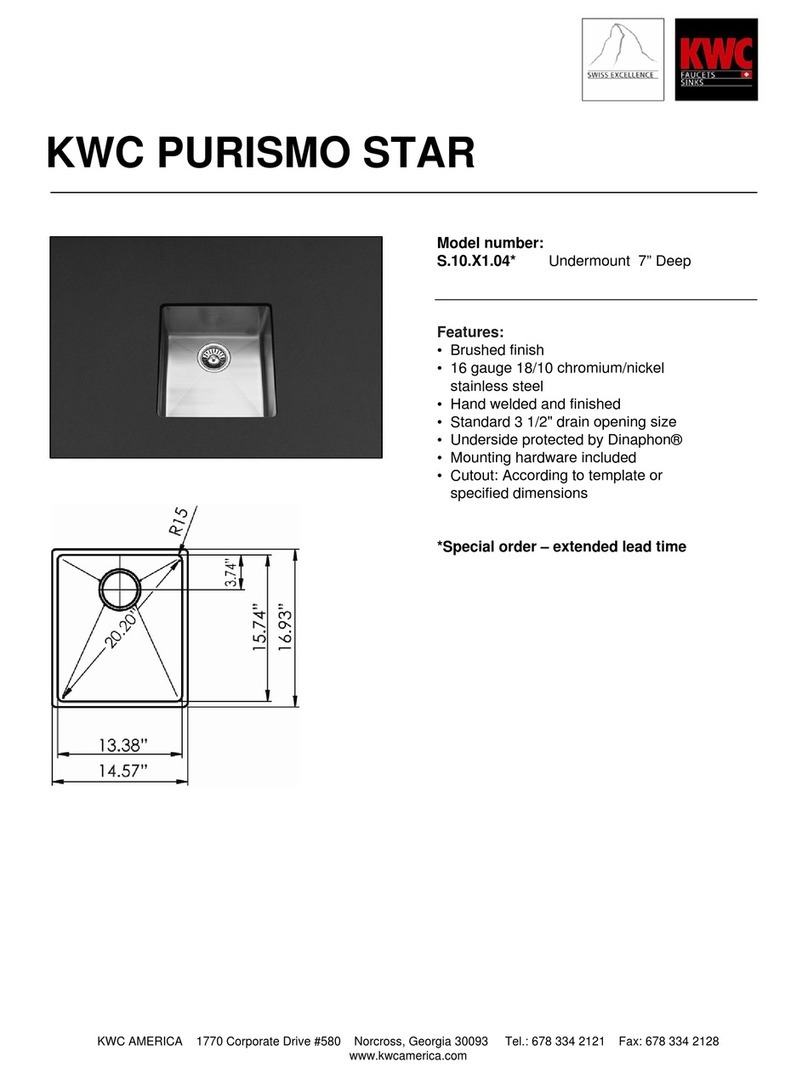
KWC
KWC PUSISMO STAR S.10.X1.04* Specification sheet
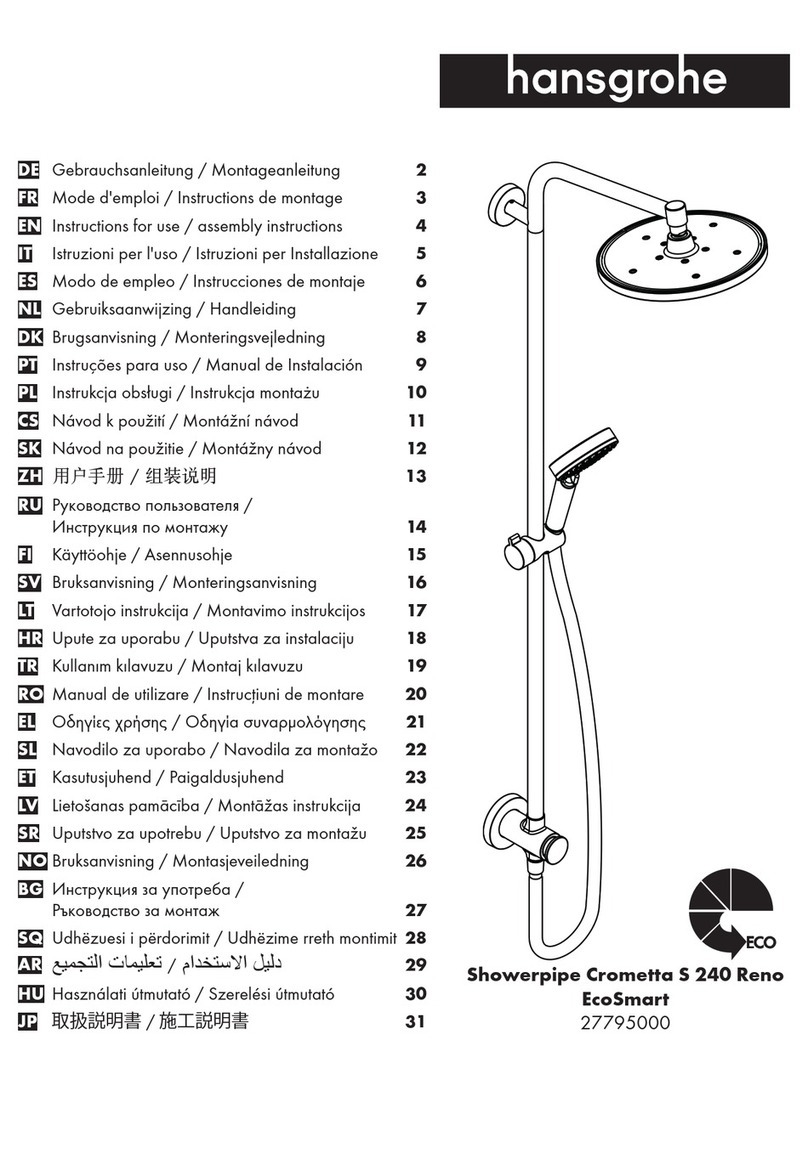
Hans Grohe
Hans Grohe Showerpipe Crometta S 240 Reno EcoSmart... Instructions for use/assembly instructions
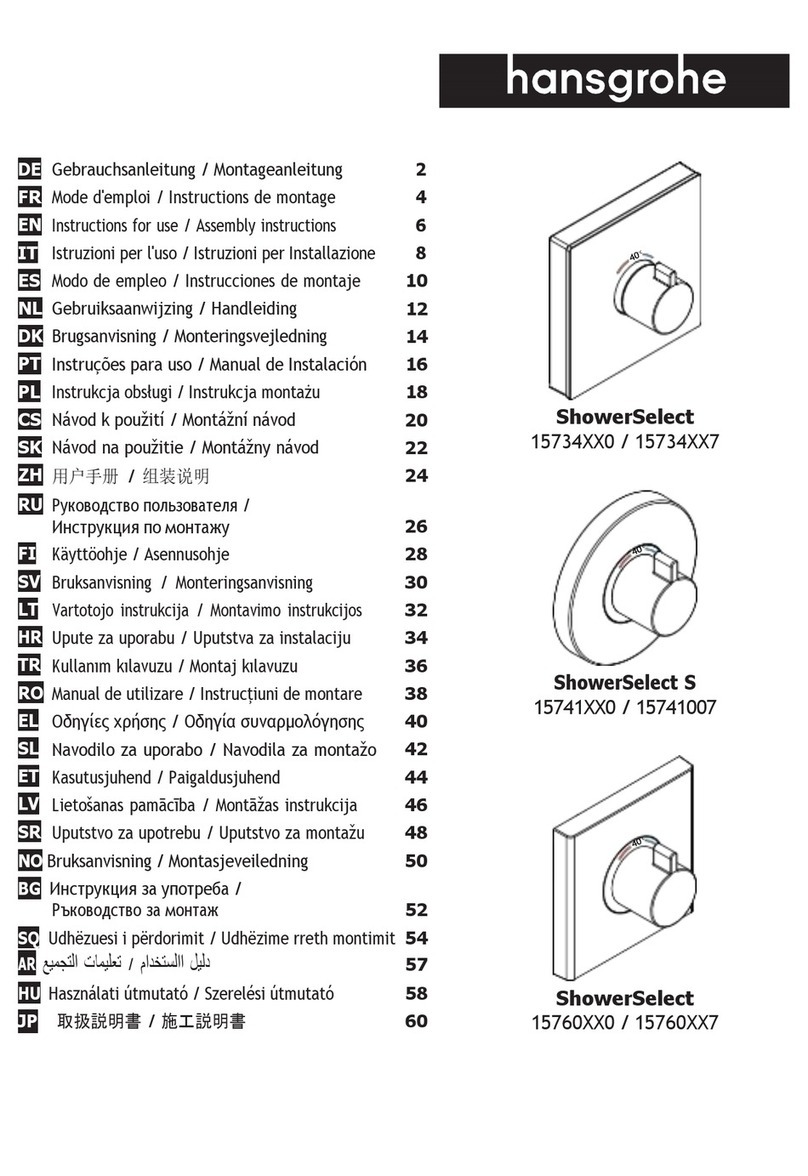
Hans Grohe
Hans Grohe ShowerSelect 15760 0 Series Assembly instructions

Kohler
Kohler K-9295 Homeowner's guide
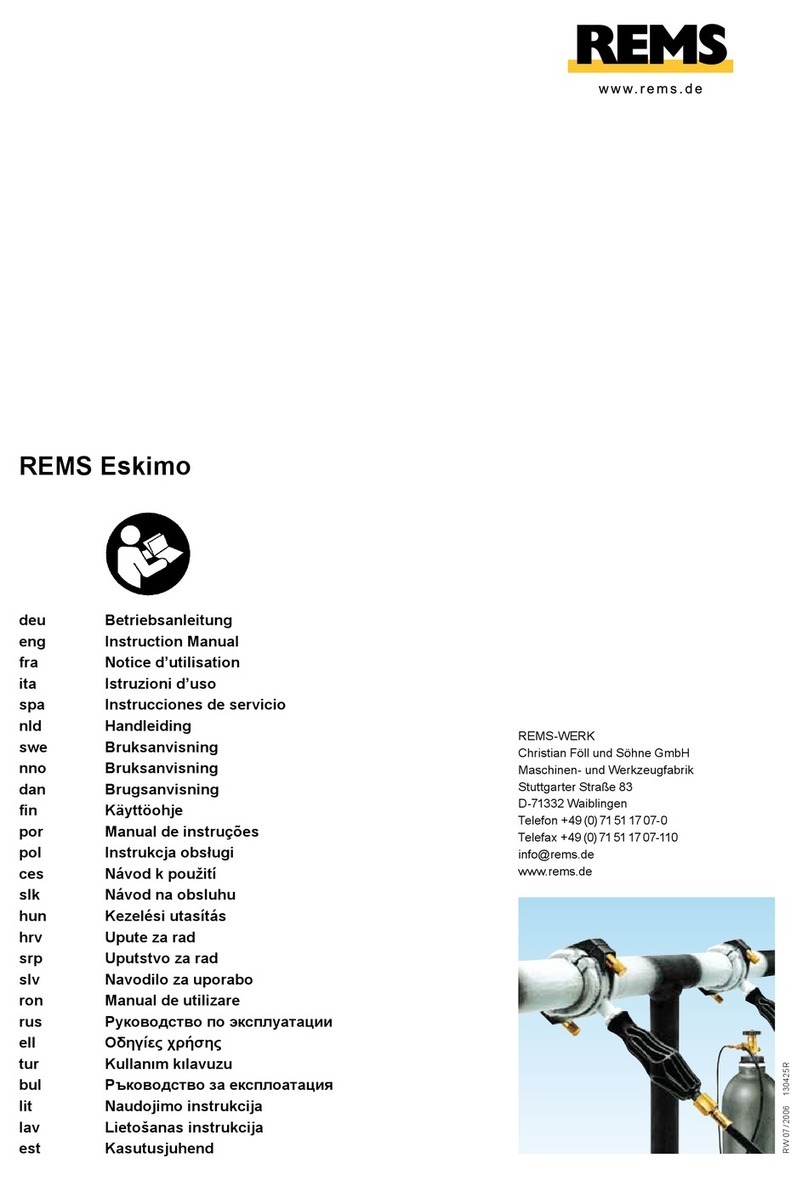
REMS
REMS Eskimo instruction manual
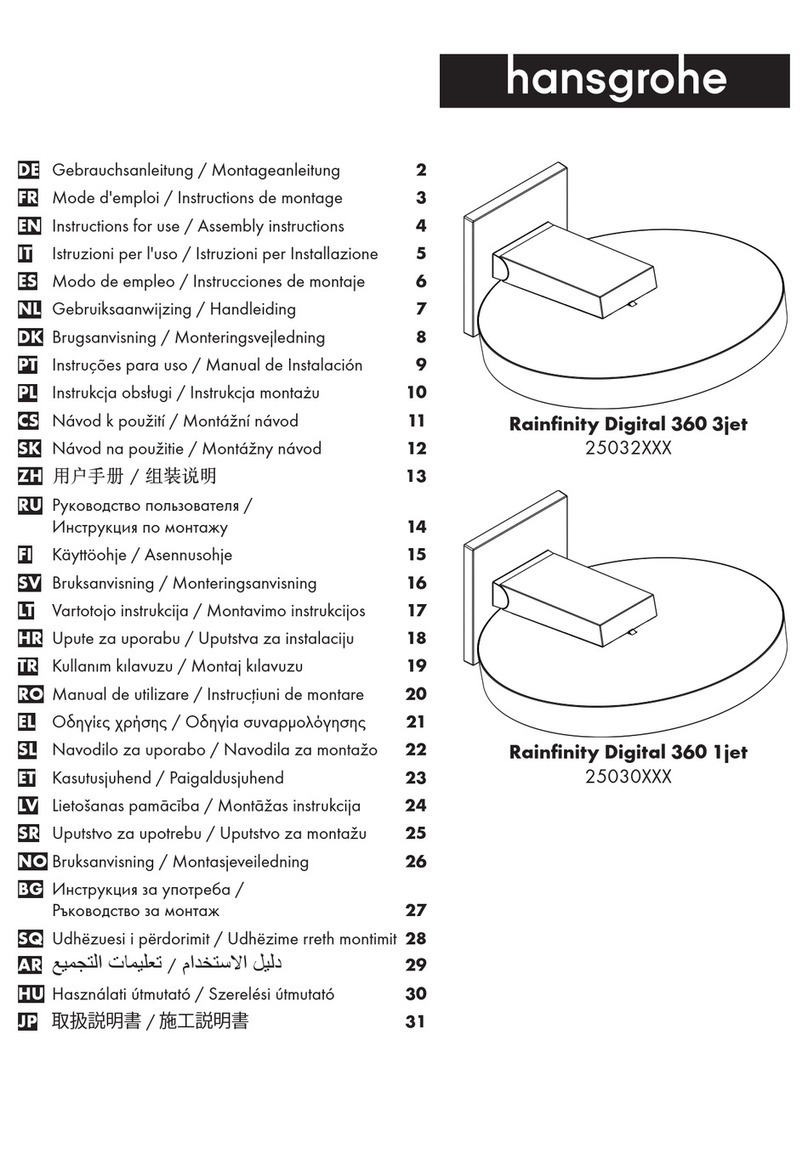
Hans Grohe
Hans Grohe Rainfinity Digital 360 3jet 25032 Series Instructions for use/assembly instructions
